BOB-BP
This post introduces APRS for the active ham… the Battery Operated Beacon for Back Packing (BOB-BP). Here is a quick view of the first prototype design…
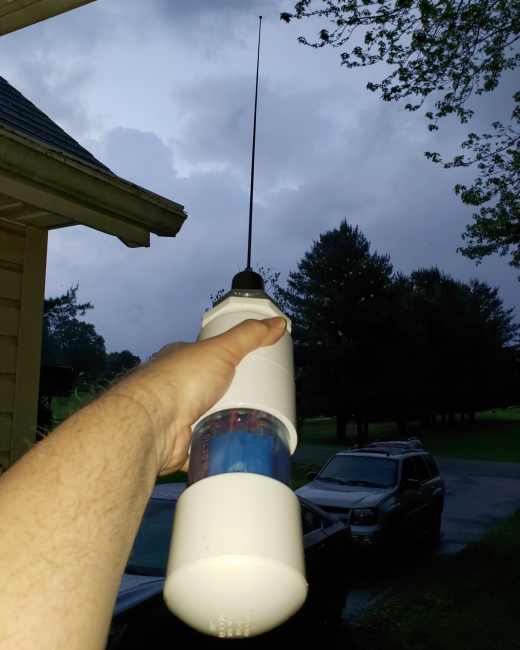
BOB’s guts
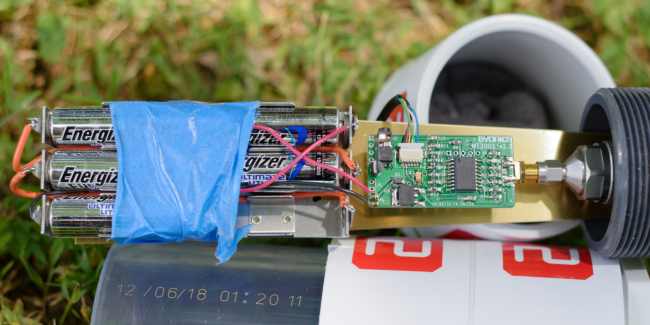
There’s not much to this system really. It boils down to five sub-systems…
- APRS transmit module (commercial off-the-shelf),
- Power for the transmit module (battery holder) and a way to mechanically hold it in place (the brass piece),
- GPS receiver (opposite the batteries in the photo above),
- A no compromise antenna for the transmit module (more on that below),
- A housing for the assembly that will fit into a 20 fl. oz. water bottle pocket and provide opposing mass for the antenna.
Here is a view of the prototype showing the GPS antenna behind the clear pipe taped to the brass bracket opposite the batteries. This BOB includes labeling to tell volunteers at a glance what icon this creates in the APRS system. More on that later.
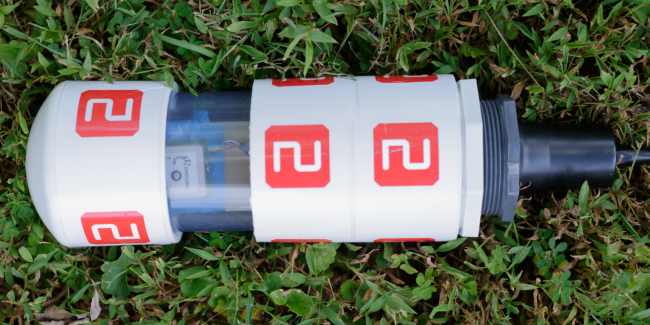
I built two prototypes. One with all white and clear pieces glued together and other, above, with the bottom cap unglued. Both bottom caps have a 1/32 inch hold drilled in the middle to provide a means for atmospheric equalization. This hole also makes it much easier to remove and install the cap on the #2 model above. I’m still on the fence on whether to glue the bottom piece, but that’s why we build functional prototypes to play with.
The clear portion was a bit of a lark. I wanted a way to visibly confirm proper operation. More on that later.
Byonics MT-2001 at the heart
For all its size, the actual electronic complement is the space thrifty 1 x 2 inch MT-2001 board from Byonics.
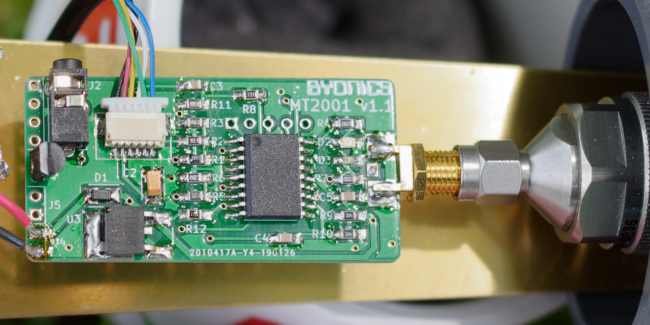
The MT-2001’s strength is its simplicity. Key features include:
- Transmit only.
- 2 watts or so power output.
- User configurable parameters for beacon interval, your callsign, path, etc.
- GPS option (the white connector seen above) provides well integrated geo position, time, etc.
- Just attach antenna, power it, and forget it.
Not shown is the transmit module soldered underneath the board. See Byonics for more details.
The MT-2001’s SMA connector mates to an SMA to N adapter for integration with the BOB-BP antenna system. The NMO-N-SMA interface entirely supports the MT-2001. With no mounting holes, that’s the best I could do for the moment. So far so good given its low mass. Offering no support to the MT-2001, the brass piece behind the MT-2001 holds the battery system a fixed distance from the antenna end. The result is all the guts are attached to the gray PVC piece providing a way to remove the entire system from one end.
Power
Six AA size cells provide the correct voltage for a good, worry free, run of the beacon.
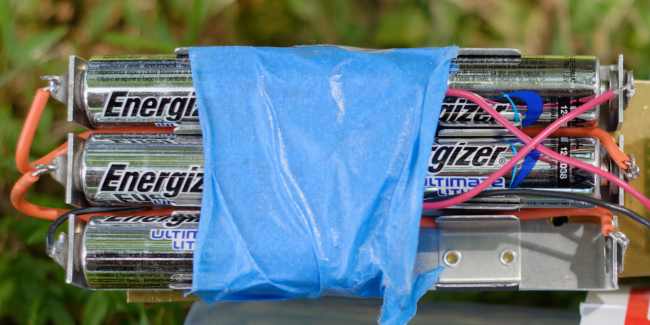
Yeah one of the cells is removed as this prototype has no power switch. Why you ask? Simplicity of operation, but I may have to rethink this. More on that later.
The battery holder is one of high quality from Keystone Electronics. The experimenter may well find better ways to supply power to the Byonics module. My advice is to stay away from the plastic cell holders for applications like this where rough handling is the norm. You only buy quality once!
High quality aside, the trail is harsh so I taped them in place as well just to be sure nothing came loose.
With a 2 minute beacon interval, the lithium cells last 3 days straight while alkaline cells last two. Read this article for more details.
Assembly
The following images give an idea of how this it put together.
VHF Antenna
These prototype beacons fulfill a requirement for horse trail drag rider tracking. This means not only must they provide a way to attach to whatever saddlery exists, they must hold their own getting smacked around by all sorts of trail realities. It didn’t take long before these requirements led, quite simply, towards the use of a mobile antenna with stainless steel whip.
The next consideration is the fact a 1/4 wave whip alone provides quite poor radiation efficiency as found during EiRP tests of a small HT with various antenna configurations. Read all about that here…
The key point from the article is anything shorter than a full size dipole requires something to complete the dipole. The brass piece holding the batteries may well be enough so called “counterpoise” to support a 1/4 whip, but with NMO most anything is available off the shelf including EFHW types. As EFHW dipoles have no need for a grounding system, the end-fed half-wave NMO models got the nod for this prototype.
With NMO I had my choice of whips. I chose an EFHW example from Laird and Larsen. Here is the article about those…
Yeah I had a little problem with one of them, but now they both work very well for my two prototype BOB assemblies.
Antenna support
I lathed a smooth surface on the gray plumbing adapter and drilled a 5/8 inch hole to accommodate a slick, and somewhat rare, NMO to N mount.
Converting N to SMA to hold the MT-2001
Here is the other end of the NMO mount including an N to SMA adapter. Notice the brass piece bends 90 degrees and sits flush with the inside end cap. The brass against the end cap has a 5/8ths hole. This hole, N to NMO mount, the end cap and the antenna are all concentric. The tension of the NMO mount’s fastener captures the brass piece and solidly connects it electrically to the overall “ground” of the system.
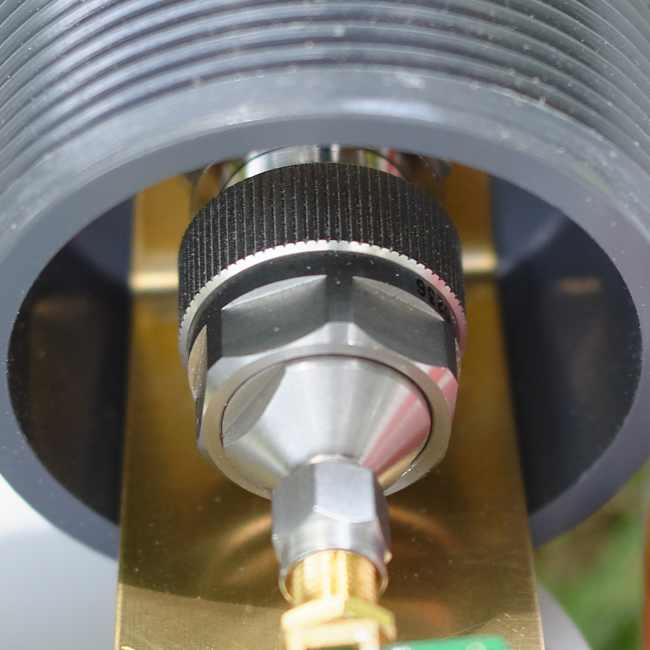
GPS Receiver/Antenna
Byonics resells a GPS receiving system all contained in one approximately 1 x 1 inch square PCB. It includes the antenna, receiver system and wiring that perfectly mates with the MT-2001 APRS beacon transmitter. Power comes from the MT-2001. Here is a up close view of this system taped to the battery pack.
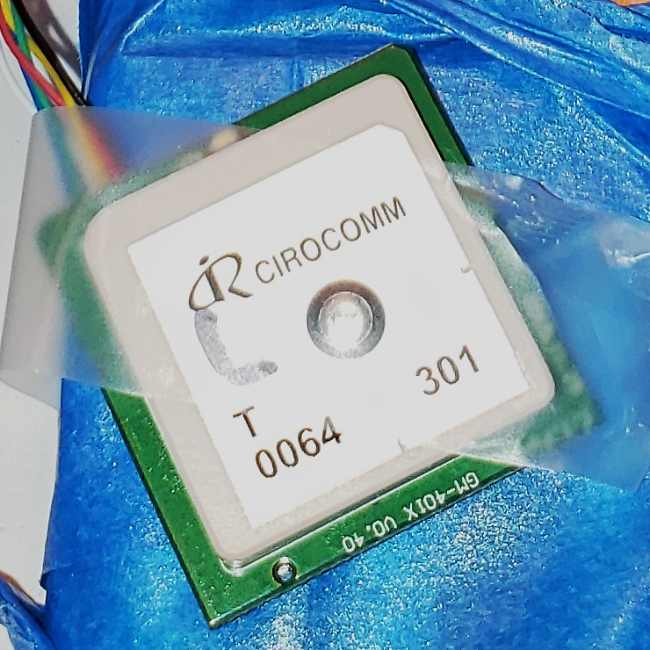
Performance of this GPS receiver is incredible. I put some thought into ensuring the patch antenna points to the sky, but the sensitivity is go good you can get away just about any antenna orientation. This is about as good as it gets. This isn’t your grandfather’s GPS.
The GPS has a brilliant blue LED that blinks at 1 PPS with a lengthly duty cycle. Being an obvious indicator of power with position established state, it’s good to have this blue light peer through the clear tube.
APRS Testing
Initial tests placed the beacon on my front porch, orange tree pot on back deck, hiking along the street and on my John Deere mower.
Results were good with the APRS system relaying about 50% of transmitted packets to APRS-IS. These tests coincided with the battery longevity testing mentioned earlier. Here is a graph of the reported lithium battery voltage and temperature as transmitted by the MT-2001.
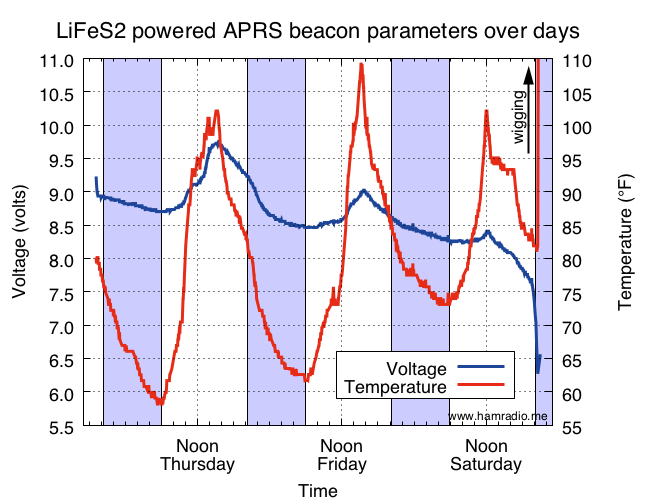
The beacon transmitted once every two minutes with reception about once every four minutes. That’s a pretty good hit rate for APRS to APRS-IS.
APRS beacon sized as 20 fl. oz. water bottle
This design easily slips into the water bottle pocket of most any pack. The hope was saddle gear has the same provisioning. There are places to put a bottle on many saddles. This design’s heavy PVC provide ample counter-weight to the sturdy, but stout antenna system. This ensures the beacon stays put.
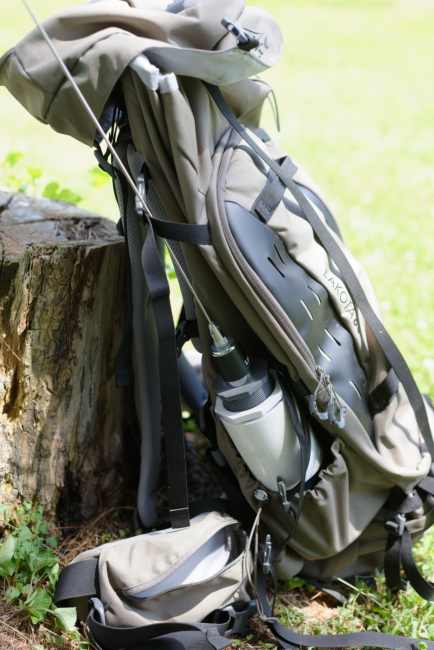
The antenna’s length gives it ample clearance to get your 2m APRS signal out. While it may appear to whip the hiker regularly, in practice on a 14 mile hike through rough trails, the whip never once smacked any part of my body.
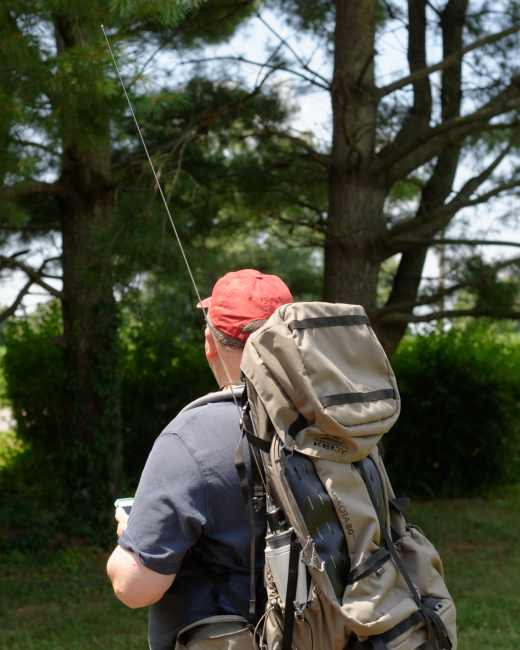
The sturdiness of the mobile whip proved itself over and over as I hit all sort of branches causing great bending. It simply snapped back to straight up without much fuss.
Here is the APRS-ID breadcrumbs on a hike seven miles in and back out the following day. I left the beacon on all night long on a chair outside our cabin and many beacon positions overlap on the right most red dot. Most of our beacons were digipeated by a station a few miles south-west of the Wolf-Gap parking area. The dead zone you see in the middle of our hike was likely caused by Big Schloss mountain located near the two close dots just north of the work “VIRGINIA.”
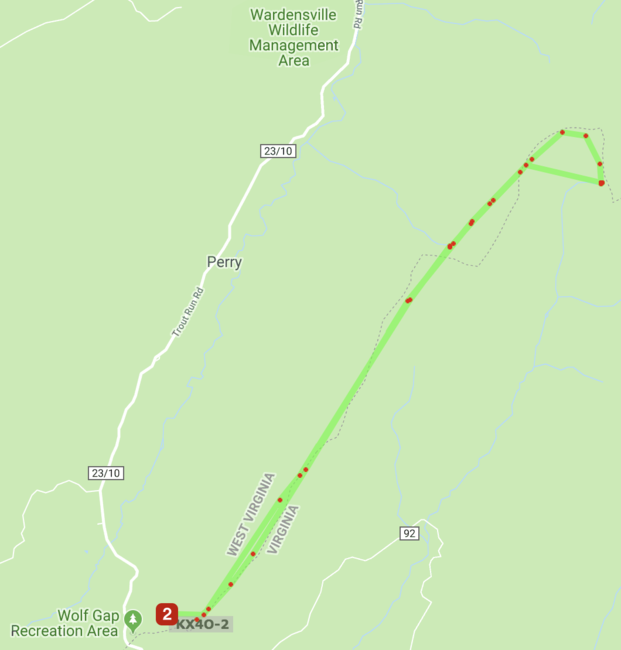
Key points of the BOB-BP APRS
Well this is a prototype. Good points…
- Radio performance is quite good. During home tests it achieved 50% success into an APRS gateway over 40 miles distant.
- The MT-2001 Byonics module is a set it and forget it device. Quite pleased.
- GPS performance is just fantastic.
- The half-wave antenna approach using a mobile whip pays dividends in efficient transmission of the two watt signal. This approach is a keeper.
- The weight balance of antenna and PVC base is remarkably good. The PVC mass in the pocket easily keeps the whip pointing up.
- Days of continuous beaconing makes this approach simple to use for events.
- No power switch makes this simple for volunteers. Just put in place and go.
Things that could stand some improvement…
- An internal power switch makes some sense, perhaps on the bottom so one can remove the bottom PVC for access and provide protection during use.
- Use of a quarter-wave NMO whip may be good enough despite the somewhat compromised “other-half” of the antenna.
- Putting this into one of your beverage pockets gives up one hydration bottle. Our our hike we found a working spring so we were good to go.
- The clear PVC gives a good view of the GPS light to indicate functionality, but it’s quite expensive material so may not be worth it for some versions.
- The MT-2001 actually stores two configurations that one can select by closing a pair of signals on the board. It might make sense to add a config switch next to the power switch to select.
Conclusion
It’s big. It’s heavy. And ugly. We dubbed it Thor Hammer during the horse race. Zero horse riders would take it along due to the full function, but long whip. Oh well I tried.
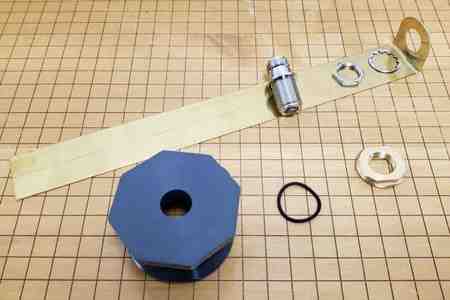
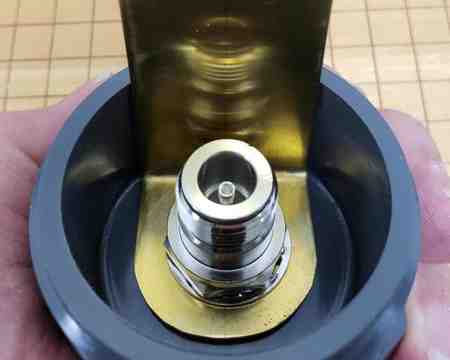
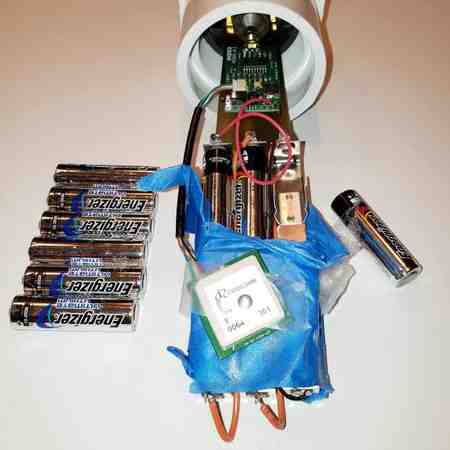

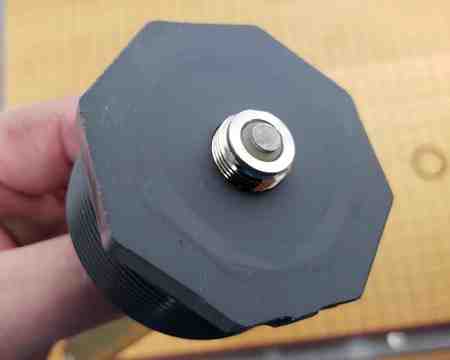
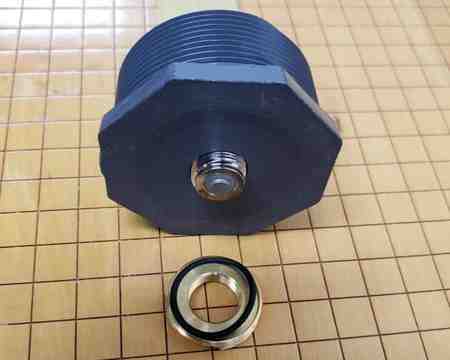
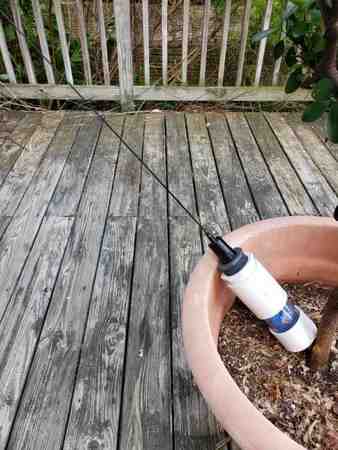
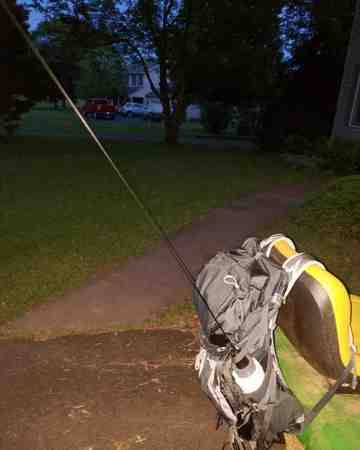

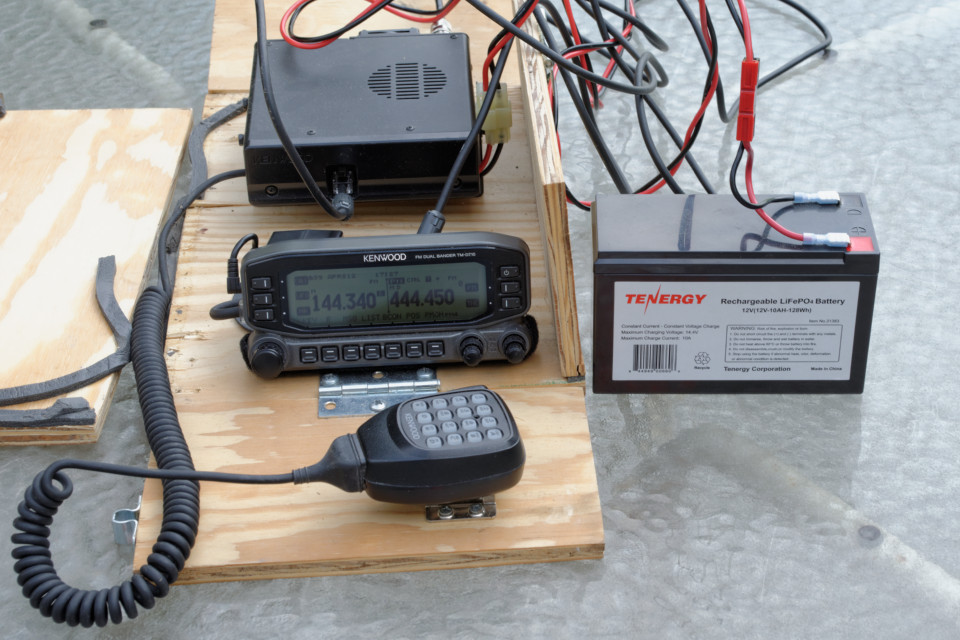
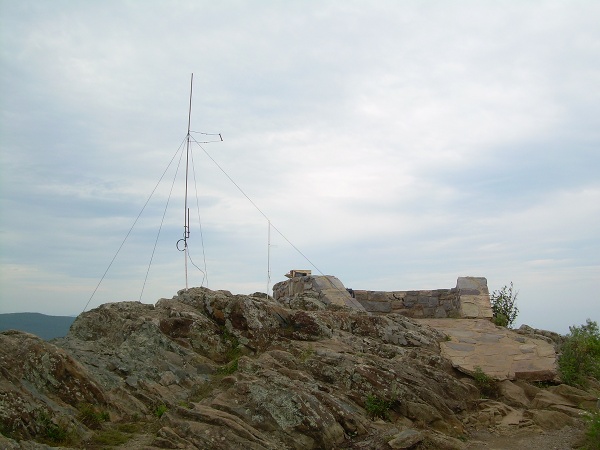
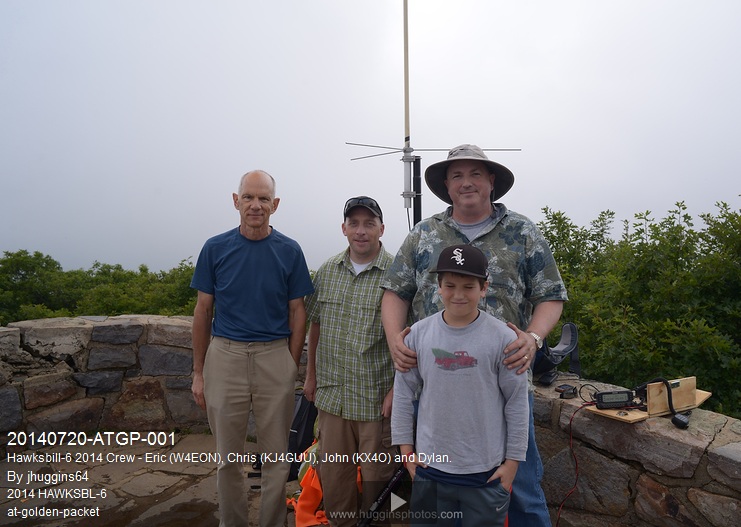
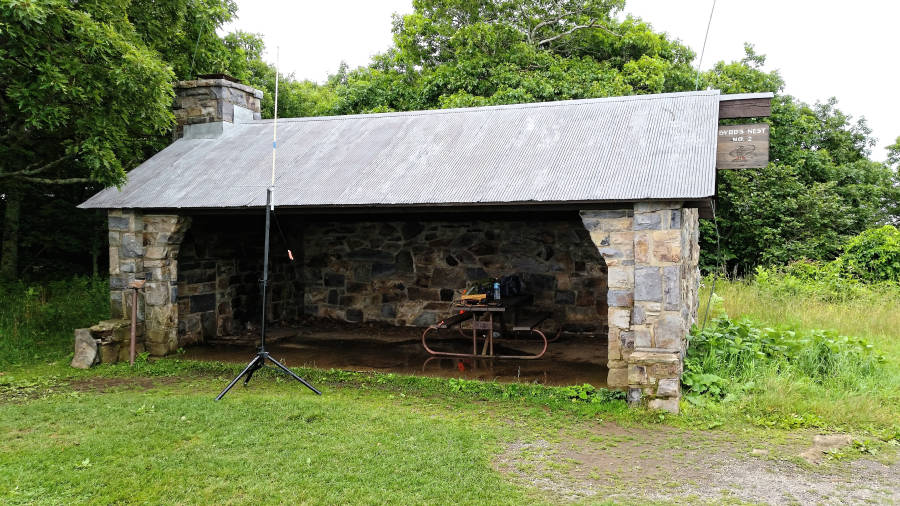

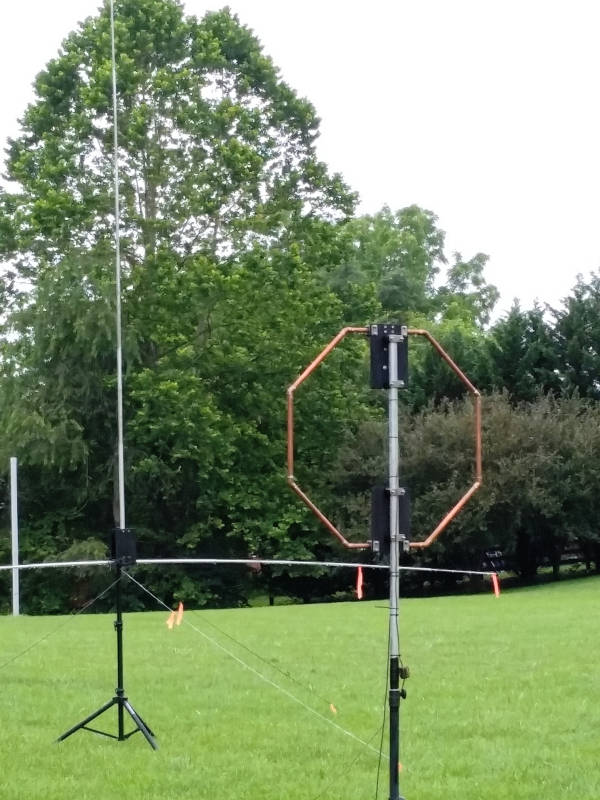
Excellent writeup. It's a sturdy design. Excellent call on the NMO usage. I found this after having my own idea of a stealth atv tracker to find in case of theft and also to track my adventures. I was curious what others had done with theirs. Instead of pvc for mine, I am putting the gps and module in a small plastic tray and potting it, powered by a very small 12v aux battery.